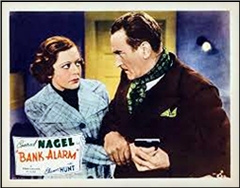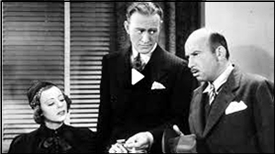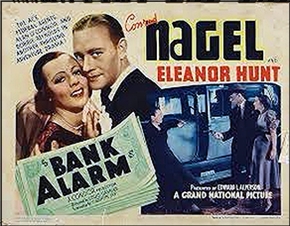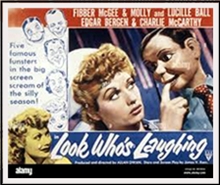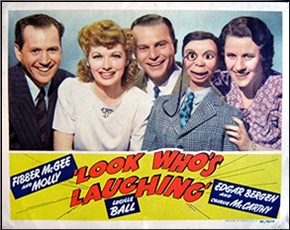Sun 10 Aug 2025
A Science Fiction Review by Tony Baer: WALTER TEVIS – The Man Who Fell to Earth.
Posted by Steve under Reviews , Science Fiction & Fantasy[10] Comments
WALTER TEVIS – The Man Who Fell to Earth. Gold Medal k1276, paperback original, February 1963. Cover art by Diane Dillon and Leo Dillon. Reprinted several times, including: Avon, paperback, 1976 (slightly updated); Bantam, paperback, 1981. Film: British Lion Film Corporation, UK, 1976; Cinema 5, US, 1976 (starring David Bowie). TV Movie: ABC, 1987. Plus two TV Mini-series.
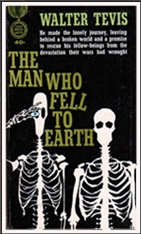
An alien, an Anthean, comes to Earth. They’ve run out of resources on Anthea.
The Antheans had just enough fuel to send one of them to Earth.
He’s long, tall and gangly, with bird like bones, but with prosthetics looks human enough to pass. He’s learned English from intercepted television broadcasts.
He has a bagful of diamonds which he pawns til he raises a decent stake.
He buys a suit of clothes, passage to nyc, rooms at a luxury hotel, and visits the best patent lawyer money can buy. He shows the lawyer formulas for more efficient oil processing, digital photography, digital recording technology, and offers 10% of the profits if the lawyer will take care of the patents and hire the infrastructure to start World Enterprises Corporation. The lawyer salivates.
Before you know it, the Anthean is a multimillionaire. An Elon Musk-like titan of technology.
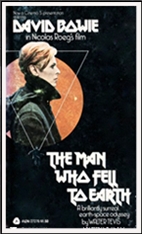
His next project is a huge spacecraft whose secret purpose is to travel to Anthea to bring the rest of his race to Earth. To take over. To rule the earth in a wise dictatorship. To save Earth from the destructiveness of man.
But the CIA discovers him and his plans. He’s arrested. Officially, the change is being a suspected non-us citizen without proper immigration papers. But he’s forged perfect proof of citizenship and has all the right papers. He’s too famous to kill, and the administration doesn’t dare tell the public he’s an actual alien. It’s an election year, and they’d be laughed out of office. Other big business moguls and the press are hounding the government on this warrantless arrest of a titan of industry. So he’s released.
But his plans are ruined. There is no way the US government will allow the incomplete spaceship to be finished. And if the Antheans arrived they’d be arrested or killed.
The Anthean realizes he’ll never see his people again, his wife and family. They’ll be unable to forestall man’s foretold fate of self destruction.
He discovers the pleasures of gin. He soaks his loneliness. And decides, what the hell is all this for? Who cares? Better to drink my way to oblivion.
An affecting and strangely believable meditation on loneliness.
